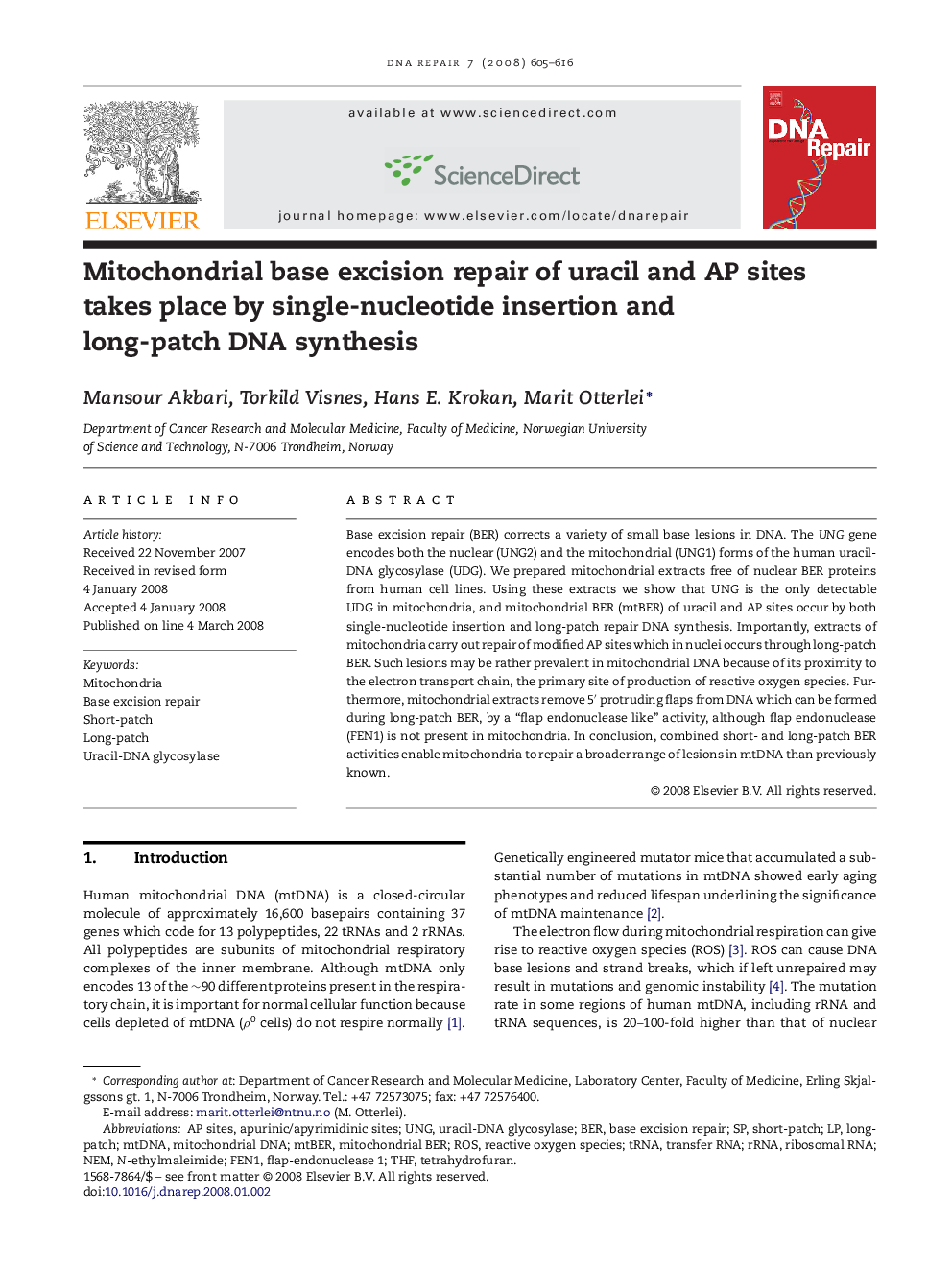| Article ID | Journal | Published Year | Pages | File Type |
|---|---|---|---|---|
| 1980898 | DNA Repair | 2008 | 12 Pages |
Base excision repair (BER) corrects a variety of small base lesions in DNA. The UNG gene encodes both the nuclear (UNG2) and the mitochondrial (UNG1) forms of the human uracil-DNA glycosylase (UDG). We prepared mitochondrial extracts free of nuclear BER proteins from human cell lines. Using these extracts we show that UNG is the only detectable UDG in mitochondria, and mitochondrial BER (mtBER) of uracil and AP sites occur by both single-nucleotide insertion and long-patch repair DNA synthesis. Importantly, extracts of mitochondria carry out repair of modified AP sites which in nuclei occurs through long-patch BER. Such lesions may be rather prevalent in mitochondrial DNA because of its proximity to the electron transport chain, the primary site of production of reactive oxygen species. Furthermore, mitochondrial extracts remove 5′ protruding flaps from DNA which can be formed during long-patch BER, by a “flap endonuclease like” activity, although flap endonuclease (FEN1) is not present in mitochondria. In conclusion, combined short- and long-patch BER activities enable mitochondria to repair a broader range of lesions in mtDNA than previously known.
